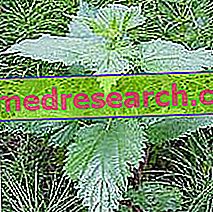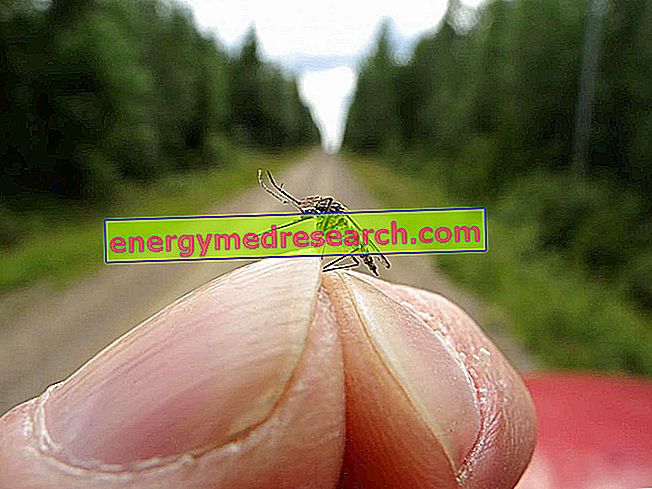
Scientific name
Urtica dioica, Urtica urens
Family
Urticaceae
Origin
Perennial herbaceous plant, native to western Asia and Africa, today present in all temperate regions of the world
Used Parts
Drug consisting of leaves and roots. In folk medicine, preparations based on nettle root were used as diuretics, astringents and for gargles.
Chemical constituents
The chemical constituents of nettle leaves are:
- Flavonoids;
- Silicic acid;
- Mineral salts (in particular calcium and potassium salts);
- Nitrate;
- Essential oil;
- trace elements;
- Caffeic acid derivatives;
- Vitamins;
- Carotenoids.
The chemical constituents of nettle roots, however, are:
- Phytosterols;
- Lectins;
- Polysaccharides;
- Lignans;
- Idrossicumarine;
- Ceramides.
Stinging Nettle: Properties of the Nettle
Nettle leaf extracts are used for diuretic and anti-inflammatory purposes, and several clinical trials confirm these activities; as for the diuretic action, they are indicated as a phytotherapeutic aid in the conditions of water retention and gravel, while for anti-inflammatory purposes they are useful in pain syndromes of periarticular, musculotendineum and osteoarticular tissues.
Biological activity
In addition to being used for culinary purposes (after boiling), the nettle is widely used also in the phytotherapy field, thanks to the properties it possesses. In fact, this plant is attributed diuretic and anti-inflammatory properties; besides being considered a valid aid in countering benign prostatic hypertrophy.
The diuretic and anti-inflammatory activities are attributed to nettle leaves and, in particular, to the derivatives of caffeic acid contained in it. Several clinical studies conducted in this regard have confirmed these properties of the plant. In particular, from these studies it emerged that the extracts of nettle leaves exert their anti-inflammatory action through different mechanisms, such as the inhibition of the synthesis of leukotrienes by the enzyme 5-lipoxygenase and the inhibition of the production of inflammatory prostaglandins through the path of cyclooxygenase.
Furthermore, nettle leaves have also been shown to have revulsive properties.
Nettle root extracts, on the other hand, have shown good activity against benign prostatic hypertrophy, although the exact mechanism of action by which the plant carries out this activity has not yet been fully clarified.
An in vitro study showed that the aqueous extract of nettle roots can in a dose-dependent manner inhibit the binding capacity of SHBG (Sex Hormone Binding Globulin) to its receptors present in the prostate tissue. This action would seem the most probable in determining the role of the vegetable drug in benign prostatic hypertrophy.
However, from another in vitro study, it was found that the methanol extract of nettle roots is also able to inhibit the activity of the enzyme aromatase in the prostate, an enzyme responsible for the conversion of androgens into estrogens. In this study, therefore, it is hypothesized that this mechanism of action may also contribute to the therapeutic role played by the plant in relation to benign prostatic hypertrophy.
The aforementioned activities are attributable in particular to lignans and lectins contained in the roots of nettle.
Nettle against urinary tract infections and kidney stones
Thanks to the strong diuretic action of the nettle leaves, their use has been officially approved in case of urinary tract infections and kidney stones.
More precisely, the naturally washing action of urine is used to favor the resolution of urinary tract infections and to prevent the formation of possible kidney stones.
For the treatment of the aforementioned diseases, the nettle is used internally. As an indication, generally, it is recommended to take 8-12 grams of drug per day. However, it is good to remember that to favor the diuretic effect of nettle it is necessary to take adequate amounts of water (indicatively, at least two liters per day).
Nettle against rheumatism
Thanks to the anti-inflammatory and revulsive properties - of which the nettle and, in particular, its leaves are equipped - this plant can be used externally in case of rheumatic pains.
For the treatment of the aforementioned disorders, the nettle can be used in the form of tincture (1:10) for external use, to be applied in the area concerned.
Nettle against benign prostatic hypertrophy
As mentioned, thanks to the activity carried out by lignans and lectins present inside the roots of nettle, the use of this plant can constitute an excellent adjuvant remedy in the treatment of benign prostatic hypertrophy.
For this purpose, the nettle must be used internally. Generally, to treat this disorder, we recommend taking about 4-6 grams of the drug a day.
Nettle in folk medicine and in homeopathy
The diuretic and anti-inflammatory properties of nettle have long been known to folk medicine, which uses the leaves of this plant precisely to favor diuresis and to treat rheumatism, arthritis, muscle pain and joint pain. Furthermore, traditional medicine uses nettle leaves in preparations for external use to fight dandruff and oily hair.
Nettle roots, on the other hand, are used as an internal remedy for rheumatism, edema, gout and prostatitis.
Nettle is also used in the homeopathic field, where it can easily be found in the form of granules, mother tincture, oral drops and glycerine macerate. This plant is used in homeopathic medicine in case of rheumatism, gout, burns, hives (in particular that caused by contact with stinging plants) and itching of the skin and scalp.
The amount of homeopathic remedy to be taken can be different between one individual and another, also depending on the type of disorder to be treated and the type of homeopathic preparation and dilution that is to be used.
Side effects
Following the use of nettle and its preparations, gastrointestinal side effects may occur such as diarrhea, nausea and gastric pain and allergic reactions to the skin.
Contraindications
Avoid taking nettle in case of proven hypersensitivity to one or more components. The use of nettle is also contraindicated in individuals who have fluid retention due to impaired renal and / or cardiac function.
Finally, the use of nettle - and its roots in particular - is also contraindicated in pregnancy, during lactation and in children under 12 years of age.
Pharmacological Interactions
Nettle and its preparations can establish drug interactions with:
- Diuretics;
- Hypoglycemic;
- Sedatives of the CNS;
- For high blood pressure.
Moreover, the tannins contained in the nettle could complex the iron eventually given concomitantly, giving rise to insoluble and poorly absorbable complexes. The formation of such complexes could have negative effects on blood cells.



